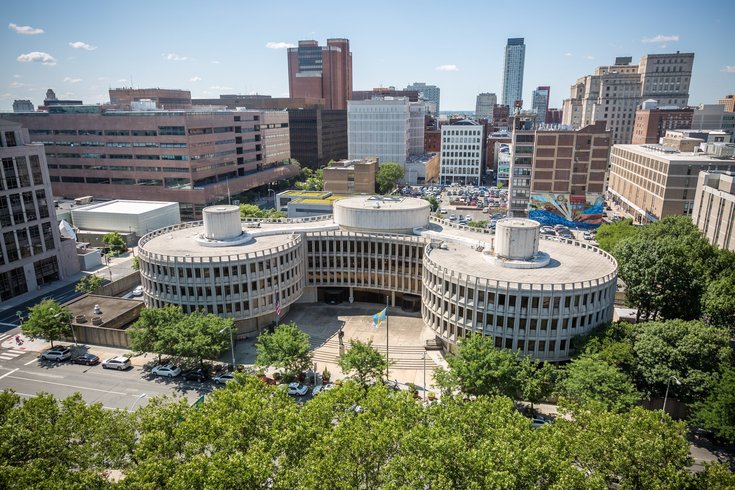
September 07, 2023
 Thom Carroll/For PhillyVoice
Thom Carroll/For PhillyVoice
A committee of the Philadelphia Historical Commission unanimously approved a proposal to add the Roundhouse to the city's Register of Historic Places. The full commission will vote on the proposal in October.
The Roundhouse, a curvy mid-century building that served as the Philadelphia Police Department's headquarters for nearly 60 years, may soon become a preserved historic site after a committee from the city's Historical Commission approved its nomination on Wednesday.
The Committee on Historic Designation heard from preservation advocates about redeveloping the former Police Administration Building at Seventh and Race streets. before unanimously recommending that it be added to the Register of Historic Places. If the commission votes to designate the property during a meeting on Oct. 13, the structure would be placed under the commission's protection and would not be eligible for demolition without its approval.
If the building is designated as historic, the commission will be tasked with reviewing all proposals to alter its appearance, including for redevelopment. No representatives from the city, which owns the building, appeared at the meeting, though Emily Cooperman, the committee's chair, acknowledged that city officials are not opposed to historic designation or redevelopment.
The Roundhouse was nominated by Docomomo U.S., a nonprofit dedicated to the conservation of modern buildings, and the Preservation Alliance for Greater Philadelphia. The 28-page nomination includes the building's exterior, called the envelope, but excludes an adjacent parking lot and a portion of the site that is owned by the Delaware River Port Authority.
"I think (the nomination) certainly makes the case for an important building, but it also sums up the conversations and debates around the building which I think warrant its preservation," Elizabeth Milroy, a member of the committee, said during Wednesday's meeting. "Certainly the architectural and technical innovations that building demonstrates are important, as well as its role as a marker in Philadelphia's history."
Nominators believe the building should be designated as historic due to a distinctive architectural style that has influenced the cultural development of the city. They argue that the Roundhouse fulfills the city's requirements for designation because it contains innovative design elements, is a familiar visual feature of its surrounding neighborhood and exemplifies the cultural and political heritage of the city.
The Roundhouse was designed in 1959 by the Philly-based architectural firm Geddes, Brecher, Qualls & Cunningham. The building, notable for its undulating, curvilinear design, opened in 1963.
While the nomination explores the ways in which the Roundhouse has been deemed architecturally significant, the public meetings have been primarily focused on the building's complex history. Many see the Roundhouse as a symbol of police brutality and urban development that displaced residents from their homes.
The nomination notes that the Roundhouse served as "the public embodiment of a police force which played an outsized, and, often, controversial role in the conflicts of the day," particularly under the leadership of former Police Commissioner and, later, Mayor Frank Rizzo. During his tenure, the police department garnered a reputation for brutality and civil rights abuses, particularly towards Philly's Black community, according to the nomination.
"Although I think it's a mistake to pretend that all of those tragic things did not take place, it's important to remember that this building was intended not as a place where all of those repressive and racist practices would have taken place, (but) a place of progressive values, and the architecture really reflects that," Cooperman said.
Early last year, the city sought public input about the possibilities for redevelopment at the Roundhouse. A report on its findings was published this March, which found that residents want the building to embrace its community while remembering the harm it has caused the city.
Philadelphians would like to see the concrete perimeter torn down and replaced with additional green space to make it welcoming to the community, according to the report. The most common proposal, though, was to utilize the space for affordable housing, though other residents acknowledged that converting the space into a recreation center, museum or community gathering space would be beneficial.
People also were interested in using the space to educate the public about police brutality or to provide a memorial for those negatively impacted by police. Others suggested integrating the space into nearby Chinatown.